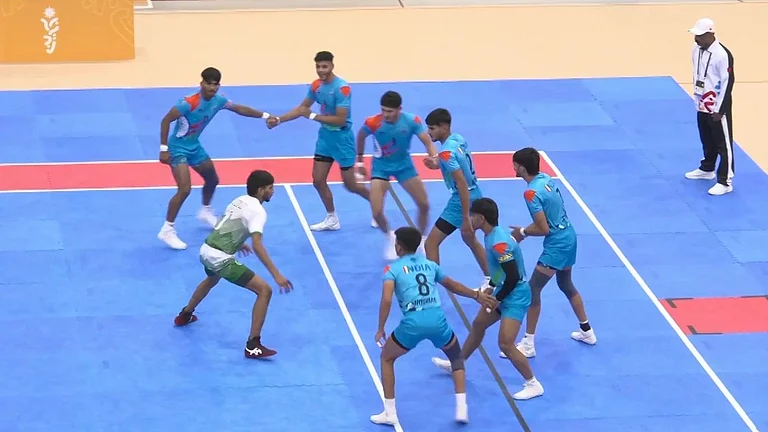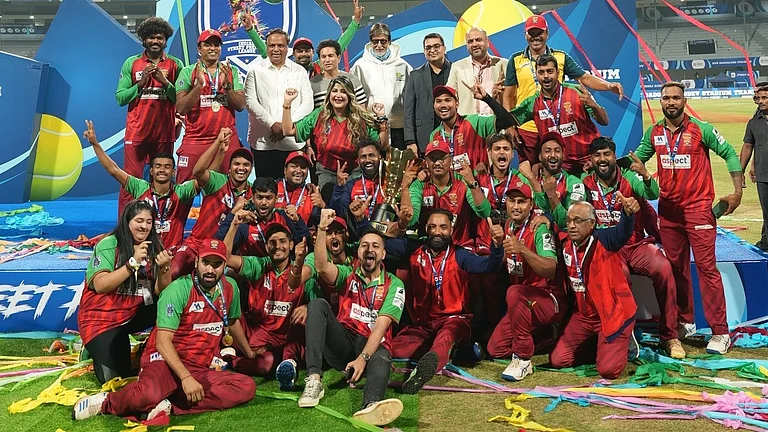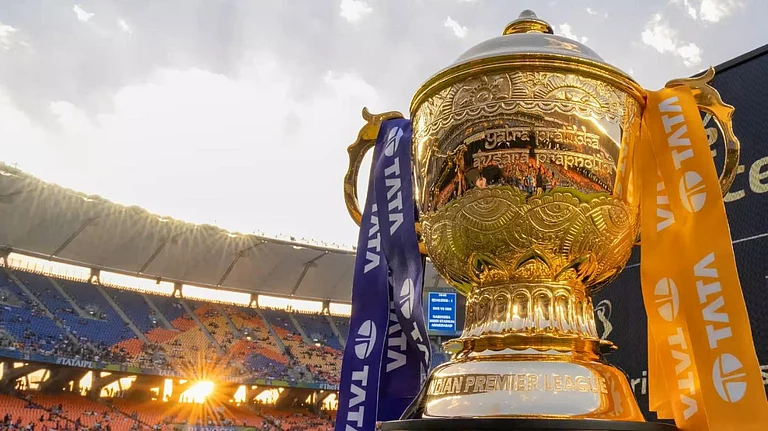Thanks to recent developments in wearable technology, the age-old sport of polo—often associated with elegance and high society—is experiencing a radical transformation. Along with improving player performance and safety, these innovations open new avenues for audience engagement and better sports management. Several international startups are leading this change, each offering their special solutions. Let's explore how these innovative businesses are changing the polo scene.
Polo-Tech Smart Shirt
The PoloTech smart shirt, created by Ralph Lauren in partnership with Canadian tech company OMsignal, is a significant advancement in wearable fitness technology. This innovative garment is intended to fit smoothly into the user's training routine, offering real-time biometric data to improve workout efficiency and overall health monitoring. The PoloTech smart shirt is outfitted with a variety of sensors that monitor physiological data such as heart rate, breathing rate, steps taken, and calories burned. These sensors are deliberately woven into the fabric, keeping the shirt comfortable and flexible throughout physical activity.

Ralph Lauren continues to lead the fashion industry in wearable technology with the release of this innovative fitness shirt and the simultaneous release of a game-changing, adaptive exercise program that analyzes extensive data to personalize individualized training for the best outcomes.
The PoloTech shirt debuts alongside the initial collection of an athletic-focused, larger Polo Sport brand. PoloTech's halo product combines the cutting edge of performance technology with lifestyle flair.
In India, where access to modern training methods may be limited, this technology could be useful for coaches to develop tailored training regimens and assist players attain their maximum potential. Monitoring heart rate and other vital indicators during practice and games can aid in detecting signs of overexertion or heat stress. This allows coaches to alter training intensity and minimize injuries, which is especially important for Indian players who may not have access to comprehensive sports science support.
Also, by examining player performance data, coaches can pinpoint areas for growth in technique, stamina, and game strategy. This data-driven method can help Indian polo teams develop more effective tactics, thereby increasing their worldwide competitiveness.
Smart Shirt’s USP
The PoloTech Smart Shirt's USP is its ability to seamlessly integrate technology into conventional polo attire. Unlike cumbersome wearables, the shirt provides a comfortable and familiar playing experience while still collecting crucial data for coaches and players. However, issues such as cost and accessibility may initially prevent widespread adoption in India. Additionally, coaches would require training to successfully use the data for player development.
Tech Enhanced Polo: The Potential Impact of Wearable Tech on Indian Players
If made available, the PoloTech Smart Shirt might represent a huge step forward in data-driven training and player safety in polo in India.
Technology's ability to adapt training and give critical information could be a significant edge for Indian polo players and coaches.
PoloTech Smart Shirt has largely been sold in the United States and a few other countries, but not yet in India.
The growing interest in sports technology and wearables in India suggests that the PoloTech Smart Shirt may be in demand shortly.
The Polo Game Shirt market is expected to develop rapidly at an annual rate (CAGR 2023-2030)
Smart Polo Helmet
The Smart Polo Helmet, a UK-developed innovation, provides a substantial leap in polo player safety and performance technology. This helmet, designed to address the high-risk aspect of polo, is equipped with sophisticated sensors that detect impact forces, follow player motions, and deliver real-time information on probable concussions. These sensors can identify the severity and location of hits and broadcast the data to a mobile app or directly to medical personnel, allowing for fast assessment and response. Additionally, the helmet frequently has integrated GPS and communication technologies.

How the technology works
The main technology consists of built-in crash sensors that detect falls and impacts during games. This innovation is especially important for India, where access to superior medical facilities on all polo grounds may be limited. These helmets, by activating emergency alerts and sending GPS data, have the potential to save lives and ensure that wounded players receive prompt medical assistance.
The prototype ARMIS Polo Helmet was created using a 3D printer and developed for production, including a crumple zone composed of expanded polystyrene, a flexible peak, and a Multi-directional Impact Protection System that moves inside the helmet to imitate the brain's natural protection system.
The low friction layer minimizes rotational acceleration to the head, lowering the danger of sustaining a major brain injury.
USP of Smart Polo Helmet
The USP of this smart helmet is its ability to prioritize player safety through real-time impact detection and potentially life-saving emergency notifications. This emphasis on safety is critical for a sport such as polo, where falls and collisions are common. In India, where access to advanced medical treatment may be limited, this technology could bring much-needed peace of mind to players, coaches, and families.
Cost and regulatory permissions may initially limit widespread usage. However, the potential benefits to player safety and well-being make this technology an important advancement in Indian polo. Smart polo helmets may become an indispensable piece of equipment for players in India and worldwide as technology advances and becomes cheaper.
How Wearable Technology is Transforming Training for Indian Polo Players
Real-time data on cardiovascular performance: Wearable heart rate monitors for horses (such as Polar Equine) enable trainers to tailor training and minimize overexertion.
Strategic training: GPS trackers (such as Equinity) provide information about the horse's speed, distance travelled, and movement patterns, allowing for better training strategies.
Increased player safety: Smart helmets with impact sensors, such as those made by Pro-Tec, detect concussions and allow for early medical intervention.
Reduced danger of injury: Wearable technology helps sportsmen and horses maintain optimal physical condition, reducing the chance of injury.
Improved teamwork: Sena and other helmet-integrated real-time communication technologies increase plan execution and on-field performance.
However, the collaboration with Indian market can benefit the players in many ways
Standardization and Education: Collaboration with wearable technology businesses to promote specific polo training gadgets (e.g., horse heart rate monitors, and GPS trackers). This would provide participants with clear options and assure interoperability among training groups.
Data Sharing and Analysis: Technology companies can benefit in ways like creating training regimens and data analysis tools expressly for polo. This would allow players and trainers to more efficiently understand data and optimize practice sessions.
Financial incentives: Collaboration may result in sponsorships or reduced pricing on wearables for the sports person. This may make the technology more accessible to a broader group of gamers.
Knowledge Dissemination: Sports associations can offer workshops or training sessions to teach players and trainers about the benefits and effective application of wearable technology in practice.
Adoption of these technologies is critical in the Indian setting for several reasons. International contests and growing participation are signs of the polo renaissance in India. Wearable technology gives Indian athletes a competitive edge through improved performance and safety precautions, putting them on a level with their international competitors. Moreover, it fosters a culture of innovation and ongoing development by supporting a scientific approach to the sport. Wearable technology will advance Indian polo as it develops, preserving its rich traditions while also propelling it forward and guaranteeing its continued viability and competitiveness on the international scene.



























